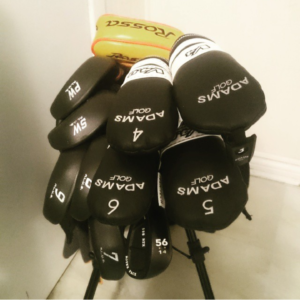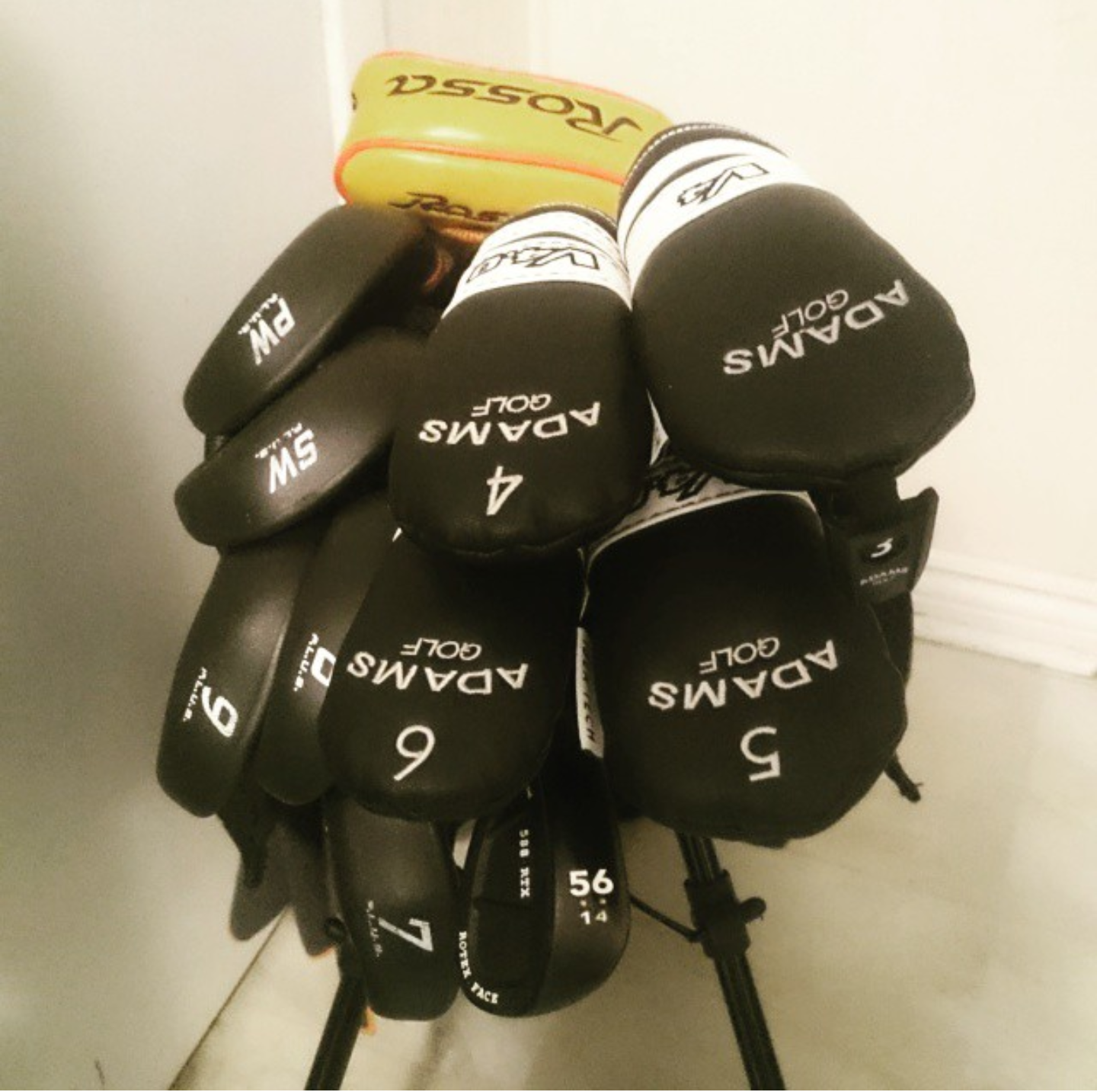What are the essential extras?
Now there are a few, but I’ll begin with the most obvious. First and foremost is of course a Golf bag to carry your clubs in. I would strongly suggest that you purchase a Stand bag. Preferably a bag with flat feet. I’ve owned both the rounded feet and flat feet models. The flat feet are at least three times as stable. Make sure that it has enough pockets to carry all of your items.
The second essential extra would be a good pair of Golf shoes. If you plan on purchasing only one pair to begin with. I would suggest that you begin with a spikeless pair. They will be allowed on all courses, and can be worn from home to the course. No need to change into another pair of shoes to play a round, and deal with storing, or carrying your other shoes around with you. Select a pair that is waterproof. Playing a round of golf with soaked feet is brutal. Another advantage of Spikeless shoes is that they allow more freedom of movement during your swing. This is particularly beneficial for Beginners. A good pair of spiked shoes can effectively lock you in place. Your body will be unable to properly rotate through the swing if you don’t generate enough power. This is generally the case with Beginner Golfers.
The third essential is a towel. You heard me right, a towel. I had no idea how important a towel to wipe my clubs clean between holes would be. Try hitting your Wedge off the grass the day after a rainfall. One swing and the grooves get so completely filled with dirt. Your next swing the face is about as smooth as your Driver. The club face needs to be free of dirt to make proper contact. If you are truly hoping to get the most out of your swing. Then keeping your clubs clean during a round is a must.
The fourth essential is really overlooked by most Beginner Golfers. I’m guilty of it as well, so don’t feel bad if this comes as a surprise to you. Do yourself a favour, and do this now if you haven’t already. Download a Golf GPS tracking Application! I’ve tried a few, and I have settled on 18birdies as my Application of choice. It keeps a great record of my Rounds. It calculates my handicap. It allows me to map out my game plan before a Round. It also keeps detailed statistics. The day before I play a Round of golf. I use 18birdies to look at the layout of each hole, and make notes directly on the Application. I plan which clubs to use, make notes of bail out areas, and figure out where all the blind hazards are. Having a plan like that will help eliminate costly mistakes. Your score will definitely benefit from proper preparation.
The last essential I’ll include is one you don’t want to forget on a clear day in summer. When you pack your bags for a beautiful day of Golf. Don’t forget to pack some form of sun protection. Whether it’s sunblock, or just shades, and a hat. A full Round of Golf with friends can take many hours. Make sure you have sun protection, and a couple bottles of water with you. Of course you can take full advantage of the beverage cart if the course has them. Either way, the last thing you want is a great day of Golf ruined because you got sunburned, or heat exhausted.
Having the right essentials will help make each, and every Round of Golf that much more enjoyable.
A quick reminder for any new visitors to my blog. Be sure to click on over to my VIP Subscription section in the menu. For a limited time Subscriptions are free! Monthly contests will begin at the end of summer. All VIP members will be automatically entered. You will be given notice of all upcoming contests, or events by email. You will also receive a new post update each Friday. Membership does indeed have it’s privileges my friends.
Beginner’s guide to Golf







